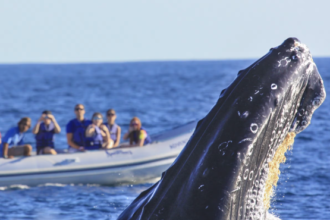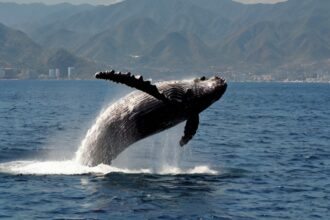best whale watching in mexico
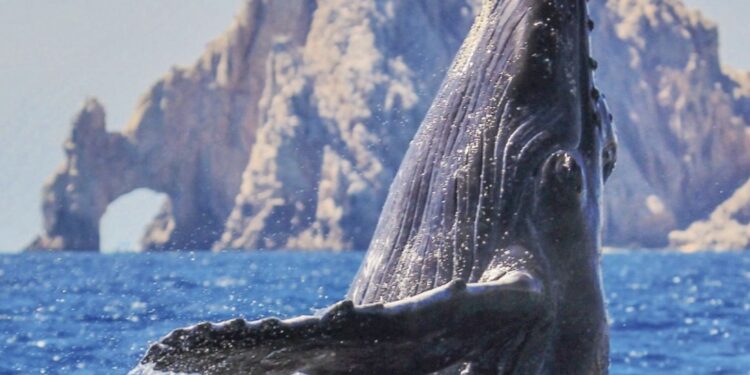
Nature puts on one of its greatest shows along Mexico’s coastline when whales make their incredible 12,000-mile journey. These magnificent creatures, along with dolphins, turn the waters into a marine wildlife paradise from late December to early April. More than 30 different species can be spotted during this time.
Gray whale mothers make San Ignacio Lagoon unique – it’s the only place worldwide where they actively approach humans. These gentle giants create magical moments that visitors never forget. The Sea of Cortez lives up to its nickname “the world’s aquarium” with its rich marine life. Blue whales, humpbacks, fin whales, and sperm whales call these waters home.
Let’s take a closer look at the best times and places to see these amazing creatures in their natural habitat. You’ll learn about peak viewing months and the best spots to watch these giants of the sea along Mexico’s beautiful coast.
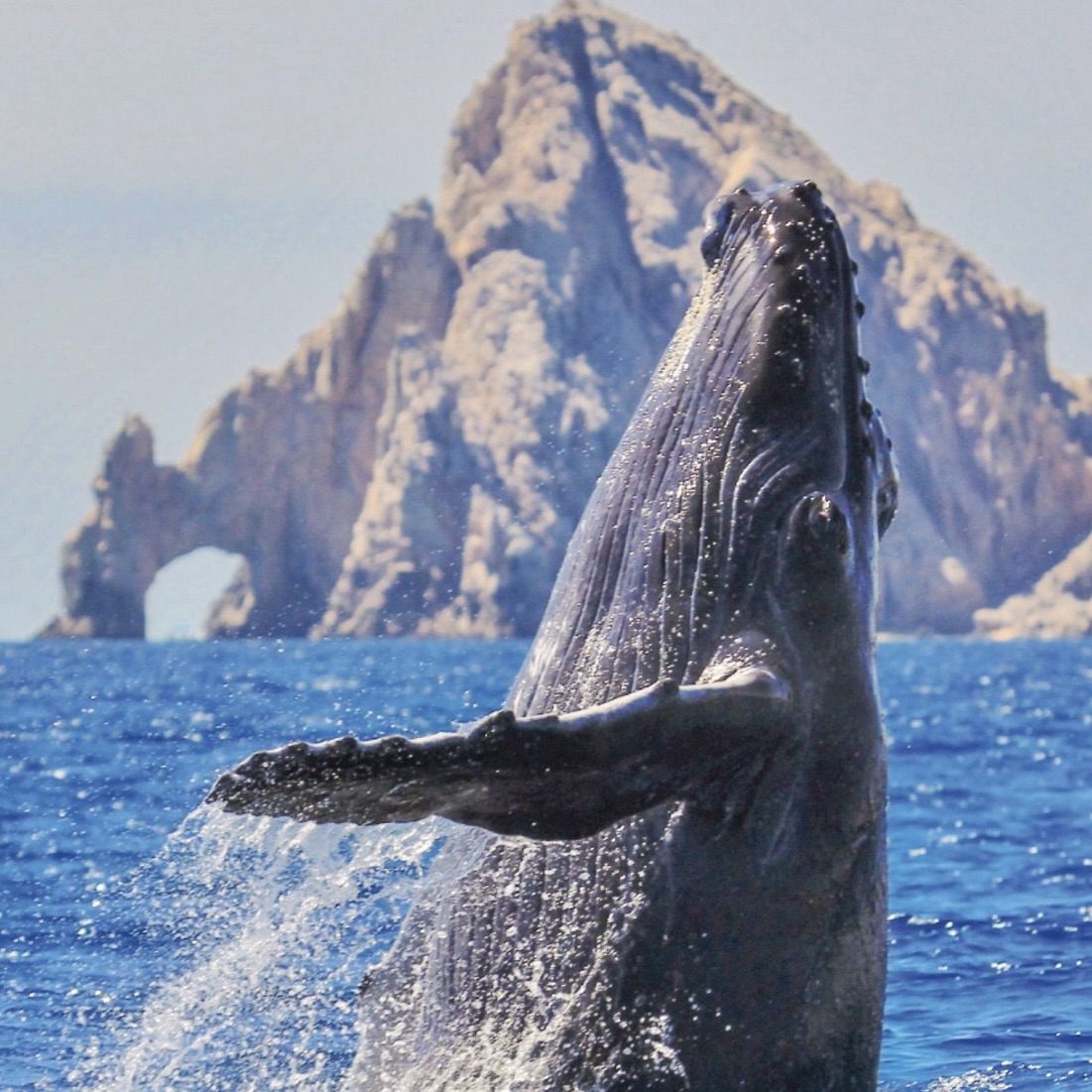
Table of Contents
- 1 When is Peak Whale Season in Mexico
- 2 Top Spots for Whale Watching in Baja California
- 3 Hidden Gems Beyond Baja
- 4 Local Guide’s Secret Tips
- 5 Planning Your Perfect Whale Watch
- 6 Here are some FAQs about the best whale watching in Mexico:
- 6.1 What is the best time to see whales in Mexico?
- 6.2 Is Puerto Vallarta good for whale watching?
- 6.3 Where do the whales go in Mexico?
- 6.4 Can you see orcas in Mexico?
- 6.5 What is the best place to see whales?
- 6.6 When to see whales in La Paz?
- 6.7 Are there killer whales in Puerto Vallarta?
- 6.8 What are the best months for whale watching in Puerto Vallarta?
- 6.9 Why do humpback whales come to Puerto Vallarta?
When is Peak Whale Season in Mexico
The Pacific waters along Mexico’s coast come alive as thousands of whales start their annual experience from the Arctic’s frigid waters. The whale season runs from December to April. February through March sees peak activity for multiple species.
Winter migration patterns
Gray whales make one of nature’s most remarkable experiences by traveling approximately 12,000 miles roundtrip from their Arctic feeding grounds. Pregnant females are the first to arrive in late December. Single adults looking for mates follow soon after. The lagoons reach their maximum capacity with nursing, calving, and mating whales by mid-February. Mother whales with newborn calves are the last to leave, and they stay until late April or early May.
Best months for different species
Each whale species has its own schedule in Mexican waters. These are the best times to spot specific species:
- Gray Whales: Show up in late December, peak from mid-February to mid-March, mother-calf pairs stay until early May
- Humpback Whales: Visit from December to April, most active from January through March
- Blue Whales: Make brief but spectacular appearances from February to March
- Whale Sharks: Stay from October to April
February through April gives you the best chance to see multiple species at once. More than ten whale species gather in the Sea of Cortez’s waters during this time. The timing shifts slightly by location. Whales arrive earlier and stay longer in the northern bays compared to southern regions.
Photographers and wildlife enthusiasts find March to April ideal as mothers become more relaxed and their calves grow playful. The weather is perfect during these months and makes exploring the entire territory easier. This creates excellent conditions to watch whales for extended periods.
Top Spots for Whale Watching in Baja California
Baja California’s pristine waters are home to three extraordinary lagoons where people can get up close with whales. These locations give visitors a chance to watch these magnificent marine mammals in their natural habitat.
San Ignacio Lagoon’s Story
San Ignacio Lagoon is the smallest but most remarkable of Baja’s whale sanctuaries. This UNESCO World Heritage site welcomes 5,000 to 6,000 gray whales between December and May. The lagoon’s untouched environment has no development except temporary tourist camps, which creates a perfect setting for whale watching. In fact, this sanctuary is the only place where gray whales swim right up to humans and bring their calves within touching distance of boats.
Magdalena Bay’s Hidden Wonders
Magdalena Bay is a hidden gem among Baja’s whale watching spots. The bay sits protected by Isla Santa Margarita and serves as a vital breeding ground where mother whales teach their calves to interact with visitors. The bay’s strict rules allow only a limited number of boats at any time, which ensures an intimate experience. This unique ecosystem features Baja’s largest mangrove wetland that captures five times more carbon than tropical rainforests.
Loreto Bay’s Amazing Encounters
Loreto Bay National Marine Park, a UNESCO World Heritage Site, attracts the world’s remaining 11,000 blue whales. This marine sanctuary gives visitors some of the best chances to see these 100-foot-long creatures. The waters between three islands – Danzante, Del Carmen, and Monserrate – create the famous “blue triangle,” known for reliable blue whale sightings. The park’s rich marine ecosystem supports more than 900 species, making it an extraordinary place to watch wildlife.
Visitors need licensed tour operators for whale watching trips since all three locations follow strict federal rules. These measures protect the whales and give tourists the best viewing experiences throughout the season.
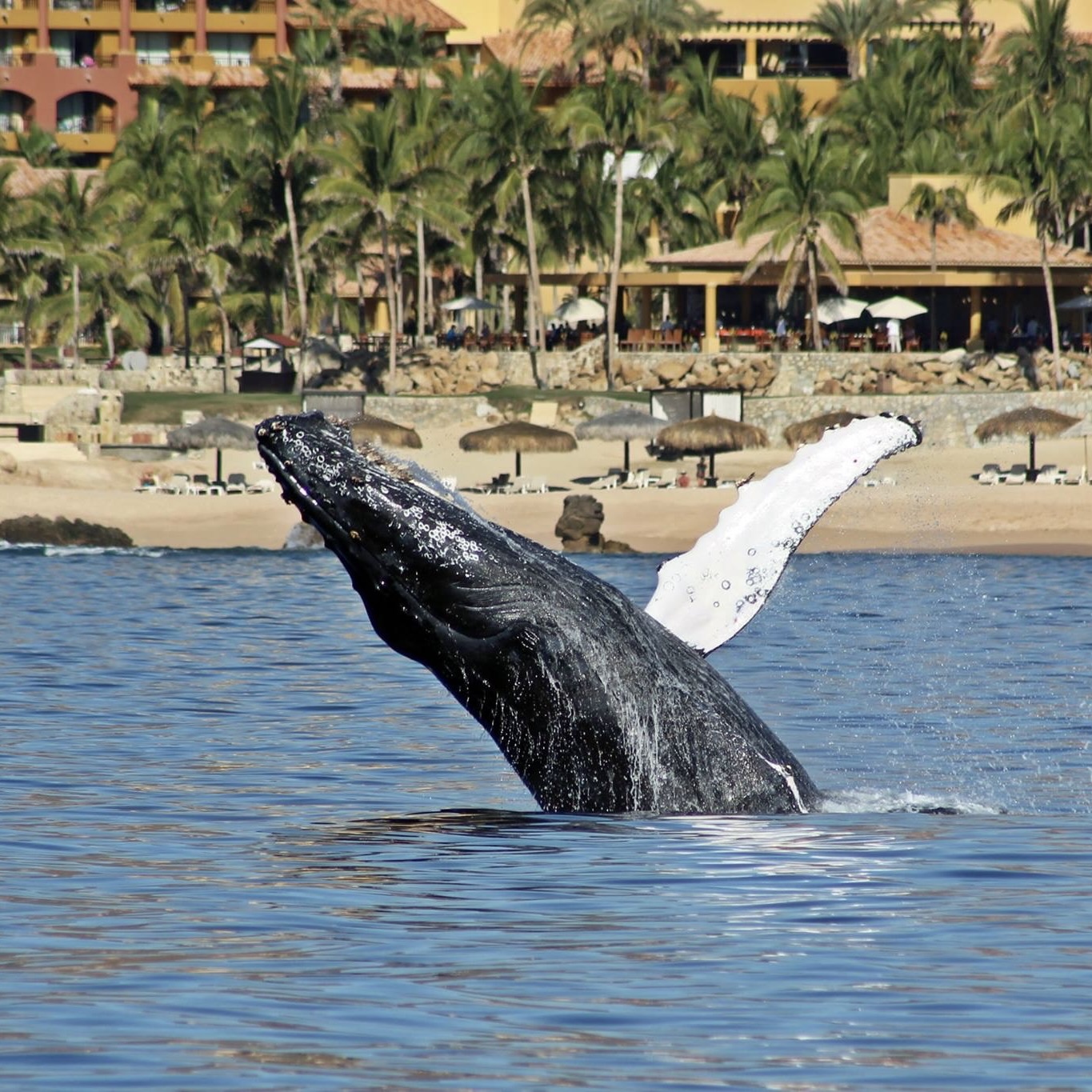
Hidden Gems Beyond Baja
Mexico’s Pacific coast boasts amazing whale watching spots that rival the famous waters of Baja California.
Puerto Vallarta whale routes
Banderas Bay becomes a whale sanctuary every winter. Hundreds of humpback whales swim into these warm waters between December and March. January and February provide the best viewing opportunities. Whale sightings can start as early as November and last until May, based on water temperatures.
Thousands of humpback whales choose Puerto Vallarta’s waters each winter. They come here to give birth and raise their young. These magnificent 30-ton mammals create breathtaking displays as they leap and play together in the bay. The area’s rich biodiversity makes it one of Mexico’s top whale-watching spots.
Small sailboats create a more personal viewing experience than larger vessels. Whales tend to come closer to these quiet boats, which enhances the experience. Tour operators’ boats come equipped with special devices that let visitors hear whale communications.
Oaxaca Coast discoveries
Huatulco shines as a hidden gem on Mexico’s southern Pacific shore. Whale enthusiasts can enjoy less crowded experiences here. The region’s seven bays and peaceful waters draw humpback whales from December to March. Huatulfo stands out because of its intimate tours with small groups. These tours often include biologists who get sighting alerts from lighthouse watchers.
Puerto Escondido provides another fantastic viewing spot where whale watching starts in November. December through February marks the peak viewing season. Humpback whales appear most often, while blue whales, gray whales, and orcas sometimes visit these waters.
Early morning trips from Puerto Escondido give the best results. Most tours start from Playa Principal or Puerto Angelito. Local operators stay connected through radio, sharing whale locations to maximize sighting chances. Though whale sightings aren’t guaranteed, visitors often see pods of dolphins, sea turtles, and jumping mobula rays during their trips.
Local Guide’s Secret Tips
Expert whale watching guides share their knowledge to help you spot these magnificent marine mammals. Their practical tips will help you plan an amazing whale watching trip in Mexico’s waters.
Best viewing times of day
Morning tours give you the best conditions to watch whales. The waters stay calmer before midday and you’ll find it easier to spot whales while enjoying a smoother trip. Captains tell us whales are most active early in the day, though some spots see another burst of activity during afternoon hours.
Tours usually run twice daily – one early departure at 8 AM and another around noon. People who get seasick should pick morning trips because the sea stays calmer. Afternoon adventures can show more whale activity thanks to higher tides.
Weather patterns to watch
Marine experts see clear links between weather and whale behavior. Winter brings cool nights and early mornings that turn into sunny, warm afternoons. These temperature changes affect how active whales are throughout the day.
Whales follow activity cycles – they’re usually more active for 2-3 days before taking short breaks. Guides use these patterns to predict the best viewing times. Sea conditions matter too – afternoon winds can make waters choppier, but this sometimes leads to more whales surfacing.
Booking with local operators
The right tour operator can make your whale watching experience exceptional. Look for operators with SEMARNAT flags (Mexico’s environmental authority) – this shows they follow wildlife protection rules.
Tours cost between 600 and 2,000 Mexican pesos ($30-100 USD), depending on location and length. Book early during peak season from January through March.
Here’s what experienced guides suggest for first-timers:
- Pick operators with marine biologist guides who explain what you’re seeing
- Check if operators follow wildlife viewing rules
- Try to book multi-day tours to increase your chances of great sightings
Private tours are a great way to get more flexibility with viewing time and better guide interaction. The best operators put whale and visitor safety first while keeping respectful distances from these magnificent creatures.
Planning Your Perfect Whale Watch
A successful whale watching trip needs good preparation and the right gear. Your well-laid-out trip will give a comfortable experience and great chances to photograph these magnificent marine mammals.
Essential gear checklist
The weather at sea changes fast, so you need to pack strategically. Your outfit should have layers – a lightweight waterproof jacket with hood will protect you from sea spray and wind. You might also want thermal undergarments to stay warm during morning trips.
The ocean sun can be intense, so bring:
- Biodegradable sunscreen and lip balm (minimum SPF 15)
- Polarized sunglasses with UV protection and securing strap
- Wide-brimmed hat with chin strap
- Light, quick-drying clothing
Comfort matters just as much – rubber-soled, non-slip shoes will keep you stable on wet boat surfaces. The temperature drops by a lot once you leave the shore, so extra layers are vital. On top of that, a waterproof bag will protect your personal items and camera gear.
Photography tips
You’ll need specific camera settings and techniques to capture these majestic creatures. Your original shutter speed should be between 1/1000 and 1/2000 seconds to offset boat movement and get sharp images. The best results come with an aperture between f/5.6 and f/9, while keeping ISO as low as possible – under 500 works best for newer cameras.
A zoom lens is a great way to get good shots since whales can surface anywhere. A lens range of 100-400mm works best for most whale watching scenarios. Keep a wider lens (24-70mm) ready too – it helps with unexpected close encounters.
These technical adjustments will improve your image quality:
- Use aperture priority mode in changing light conditions
- Get to water level when possible for dramatic shots
- Use a polarizing filter to cut water glare and show whale details
We photographed mostly in morning light when waters were calmer. Of course, fog can create atmospheric images – in these conditions, overexpose by +0.3 to +0.7 stops to get better results. Pack extra batteries and memory cards because whale watching often takes longer than planned.
The weather shapes how your photos turn out. Bright, sunny days make it hard to deal with harsh reflections off whale surfaces. Overcast skies often give you better chances for detailed shots by removing harsh shadows. You’ll get the best shots from the boat’s right side near the back, away from crowds, where you can move quickly when needed.
Mexico’s coastline offers one of nature’s most amazing whale-watching displays. The peak season stretches from December through April, but February and March are perfect months to see multiple species at once. You’ll find unique chances to get close to these magnificent creatures at San Ignacio Lagoon, Magdalena Bay, and Loreto Bay.
The right preparation can turn a good trip into an amazing adventure. You’ll need the right gear, a reliable tour operator, and some photography know-how to capture these special moments. The best time to spot active whales is during early morning tours when the waters are calm. Weather and timing are vital factors in your experience.
Puerto Vallarta and Oaxaca’s coast are just as impressive as Baja’s prominent spots. These hidden gems let you watch whales in a more intimate setting with smaller crowds. The locations still follow high-quality whale watching standards.
Anyone can experience the wonder of Mexico’s whale watching season with the right local knowledge and equipment. These majestic marine mammals leave every visitor amazed, creating memories that stay with you long after you return home.
Here are some FAQs about the best whale watching in Mexico:
What is the best time to see whales in Mexico?
The best time for whale watching in Mexico is from December to April, when various species migrate to the warm waters for breeding and calving. Baja California and the Pacific coast are particularly popular during this period. If you’re looking for the best whale watching in Mexico, destinations like Puerto Vallarta, Los Cabos, and the Sea of Cortez offer prime viewing opportunities.
Is Puerto Vallarta good for whale watching?
Yes, whale watching in Puerto Vallarta is one of the best experiences in Mexico. Every year, humpback whales migrate to Banderas Bay from December to March. Many tour operators offer boat excursions, giving visitors a chance to see these incredible animals up close.
Where do the whales go in Mexico?
Whales migrate to various locations along Mexico’s Pacific coastline, including Baja California, the Sea of Cortez, and Banderas Bay. The best whale watching in Mexico happens in places like Puerto Vallarta, Los Cabos, and Magdalena Bay, where gray whales, humpback whales, and even blue whales can be spotted.
Can you see orcas in Mexico?
Yes, orcas can sometimes be seen in Mexican waters, though they are not as common as other whale species. They are occasionally spotted in the Sea of Cortez and near Baja California. While whale watching in Puerto Vallarta focuses on humpback whales, orcas have been seen in the area from time to time.
What is the best place to see whales?
Some of the best locations for whale watching in Mexico include Baja California, Puerto Vallarta, and the Sea of Cortez. Baja California is known for its gray whales, while whale watching in Puerto Vallarta is famous for its humpback whale population. Los Cabos and La Paz also offer excellent opportunities to see these magnificent creatures.
When to see whales in La Paz?
The best time for whale watching in La Paz is from January to March. This period sees gray whales migrating to the warm waters of Baja California Sur to give birth. While humpback whales are more common in Puerto Vallarta, La Paz is ideal for spotting gray and even blue whales.
Are there killer whales in Puerto Vallarta?
While not common, killer whales have been spotted near Puerto Vallarta. The area is primarily known for humpback whales, but orcas occasionally pass through. For those interested in whale watching in Puerto Vallarta, the best time to see humpbacks is from December to March.
What are the best months for whale watching in Puerto Vallarta?
The best time for whale watching in Puerto Vallarta is from December to March. This is when humpback whales migrate to the warm waters of Banderas Bay for breeding and calving. Tours during this season offer excellent chances to witness these incredible marine mammals up close.
Why do humpback whales come to Puerto Vallarta?
Humpback whales migrate to Puerto Vallarta’s warm waters to breed and give birth. The calm and sheltered environment of Banderas Bay provides an ideal setting for mother whales to nurture their calves. This migration is why whale watching in Puerto Vallarta is such a popular activity during the winter months.
